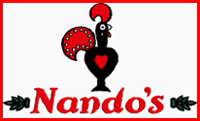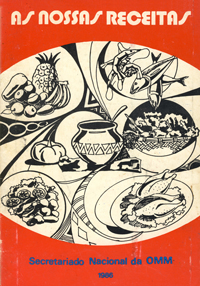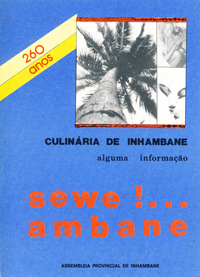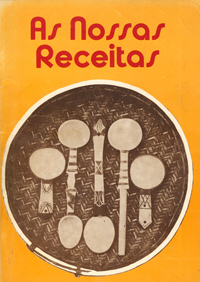Mozambican Cuisine
![]()
Cooking traditions are always and everywhere an important expression of national culture. Like the broader culture, then, Mozambican cuisine is the outcome of multiple encounters between Africa and Europe (especially, of course, but not only the Portuguese) with Indian and Arab influences along the Indian Ocean coast of east Africa. There has consequently been some mild contestation around what constitutes an «authentic» Mozambican dish:
Houve até quem dissesse que ‘Moçambique não tem na cozinha que oferece ao turista o manjar típico, puro, ou de mistura, a fusão de valores culinários, que dão sabor especial a uma cozinha mestça, curiosa, apetecida’. (Cozinha Moçambicana [Lourenço Marques, 1975], p.3.)
Most Mozambican dishes rely on a base prepared from staple crops such as maize, millet, sorghum or cassava, eaten with spicy and piquant relishes made typically from meats, chicken or seafood – particularly shrimps and prawns. Mozambican cooks will use piri piri or chillies mixed with lemons or limes to prepare the hot relish or sauce that can be used to marinate a whole chicken, or to liven up other meat and fish dishes. Of course, not all Mozambicans could or can afford to eat meat or chicken, so there is also a rich tradition of vegetable relishes and sauces.
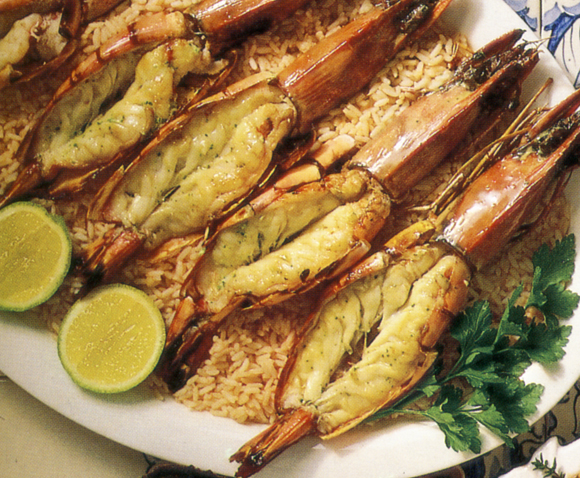
Above: A ‘typical’ southern Mozambican dish of large langustine prawns served on a bed of rice with lemon and perhaps hot piri-piri sauce.
At least four recipe books were published in Mozambique in the 1970s and 1980s, to the certain knowledge of MHN. The earliest of these was Cozinha Moçambicana [Lourenço Marques: Fundo de Turismo, 1975; 104 pages, 10,000 copies] published just after independence. This was followed, confusingly, by two publications of the Secretariado Nacional da OMM, both with the same cover title (As nossas receitas) but with completely different contents. The first was As nossas receitas [Maputo: Secretariado Nacional da OMM, 1981; 75 pages, 20,000 copies], and the second As nossas receitas [Maputo: Secretariado Nacional da OMM, 1986; 30 pages). Finally, in 1988, came Culinária de Inhambane: alguma informação [Inhambane: Assembleia Provincial, 1988; 33 pages], which included recipes for such dishes as muro wa mathapa as well as instructions for preparing makakuwa nya nyama.
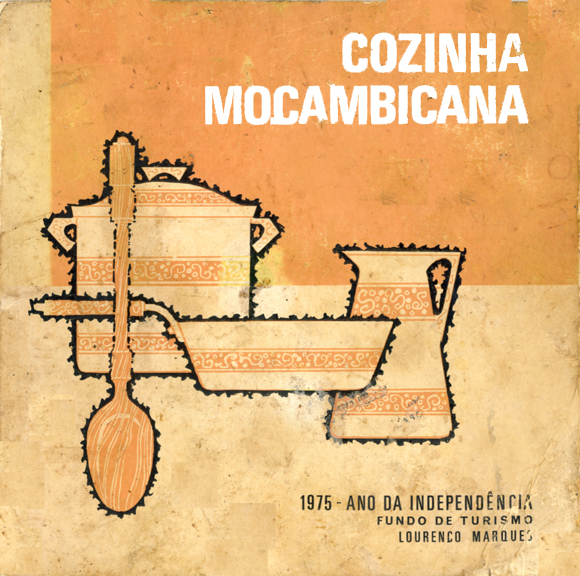
Above: The first cookery book published after independence was a collaborative effort: Cozinha Moçambicana (Lourenço Marques: Fundo de Turismo, 1975), 101p. The book is not particularly well-organised and is not divided into sections by type of dish or by ingredients.
The principal mainstream commercial success associated with Mozambican cuisine, however, has been achieved internationally by the Nando’s restaurant group, founded in South Africa in 1987 within the Mozambican-Portuguese community. The group now operates in thirty countries around the world. Its success is based on the preparation of flame-grilled chicken dishes with various piri-piri sauces, modified from traditional central Mozambican recipes such as «galinha à Zambeziana».
![]()
MHN Resources
◊ 27 May 1979
Bartomeu Tomé. Cozinha moçambicana: uma questão cultural. Tempo [Maputo] no.450 (27 May 1979), p.28-33. In Portuguese. Click here to download a PDF file, size 2.8 Mb.
◊ August 1984-30 September 1984
Third world cookbook: Mozambican cuisine. AfricAsia [Paris] no.8-9 (August 1984-30 September 1984). In English. Click here to download a PDF file, size 170 kb. Two recipes: shrimp sauce with coconut, and Zambezian chicken.
Recipes from the Newspapers
Both Notícias in Maputo and Diário de Moçambique in Beira ran recipe columns in the early 1980s, the former under the rubric «Alimentação», the latter in a series headed «Arte de Cozinhar». Below, an example from the Beira paper. MHN’s thanks to Kathleen Sheldon for this tip (and the recipe).
◊ Undated
Maria Leonor Salgado. Arte de Cozinhar: caranguejos recheados à Sofala. Diário de Moçambique [Beira], sometime in 1982-1984. Click here to download a PDF file, size 36 kb. Stuffed crabs Sofala style.
![]()



![Aluka: Struggles for Freedom [subscription required] Struggles for Freedom](imgs/aluka_200.png)



